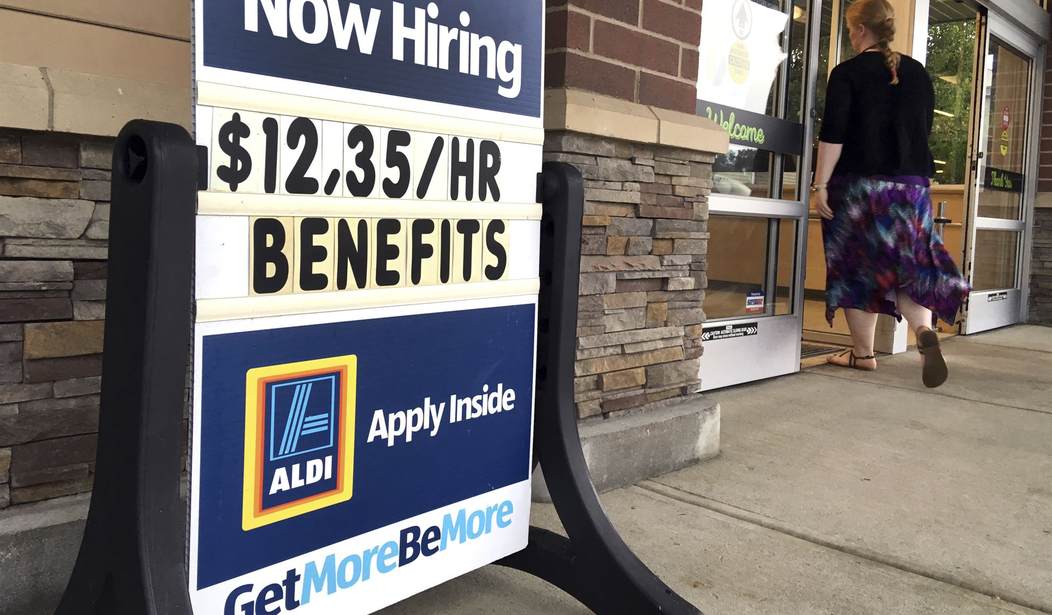The Labor Department says that there are 10 million job openings across America in a variety of industries. Employers are begging for workers, especially lower-wage/entry-level workers.
And yet, there are still 8.4 million people wanting a job and still looking for work. Why the disparity?
There is no set, ideologically satisfying answer that could explain the phenomenon. About the only thing that’s certain is that the pandemic has led to what some labor experts are calling “The Great Reassessment” — both employers and workers are reassessing their options in a changing workspace that, when it all shakes out, will alter the concept of holding a job in America.
If that sounds dramatic, it is. Remote working will be one big change. There are millions of employees who worked from home during the pandemic and liked the convenience, the flexibility, and the opportunity to be with their families. Many of them who were laid off have decided to look for another job with more flexibility.
The consequences from these changes will touch every aspect of society — social, cultural, structurally.
At heart, there is a massive reallocation underway in the economy that’s triggering a “Great Reassessment” of work in America from both the employer and employee perspectives. Workers are shifting where they want to work — and how. For some, this is a personal choice. The pandemic and all of the anxieties, lockdowns and time at home have changed people. Some want to work remotely forever. Others want to spend more time with family. And others want a more flexible or more meaningful career path. It’s the “you only live once” mentality on steroids. Meanwhile, companies are beefing up automation and redoing entire supply chains and office setups.
The reassessment is playing out in all facets of the labor market this year, as people make very different decisions about work than they did pre-pandemic. Resignations are the highest on record — up 13 percent over pre-pandemic levels.There are 4.9 million more people who aren’t working or looking for work than there were before the pandemic. There’s a surge in retirements with 3.6 million people retiring during the pandemic, or more than 2 million more than expected. And there’s been a boost in entrepreneurship that has caused the biggest jump in years in new business applications.
It doesn’t help that most of the job openings right now are not in the same occupations — or same locations — that people worked before the pandemic.
Recommended: More Trouble For Biden on $3.5 Trillion Budget Bill as House Centrists Threaten Their Own Revolt
There’s also a fundamental mismatch between where the jobs are now and how many people used to work in those industries. For example, there are 1.8 million job openings in professional and business services but fewer than 925,000 people whose most recent job was in that sector. This mismatch can be seen across the landscape of employment as industries like education and health services seek to add to payrolls when workers aren’t interested — at least, not interested in working for the amount of money they’re being offered.
In recent months, heath care workers and educators have quit their jobs at the highest rate on record, stretching back to 2002, Labor Department data show.
“This is typically the time of year we recruit for the upcoming school year, but we literally can’t get enough candidates, and we’re seeing tenured people leave,” said Cindy Lehnhoff, a 36-year veteran of the child care industry who currently heads the National Child Care Association. “If you get one good candidate, there are 10 others contacting that same person. It’s a crisis. People can’t work without child care.”
It’s no longer a question of throwing money at workers to entice them to come back. People want more flexibility in addition to more pay. Companies that adapt to the new reality of work will likely be the most successful.
The fiercest competition is for lower-paid workers. As would be expected, since they have the most leverage, they are benefitting the most from pandemic wage increases. Pay is up 8.8 percent for nonmanagerial workers in the restaurant and hospitality sectors and 6.1 percent for warehouse workers in the past five months. That’s an unprecedented rise in an economy not suffering from high inflation.
It will take years — perhaps a couple of decades — for “The Great Reassessment” to settle in and allow us to look back on what changes have been wrought. Like all changes, some will be for the better, some for the worse.
“It’s good to be shifty in a new country” was an adage my Irish immigrant grandfather learned when he first came to America in the 1880s. It simply means that those who most easily adapt to change generally make out better than those who don’t.










Join the conversation as a VIP Member